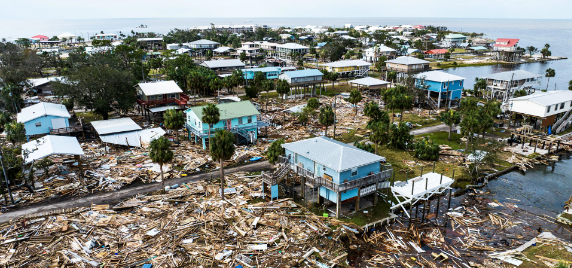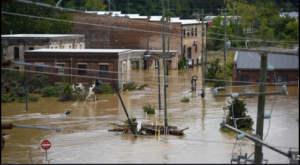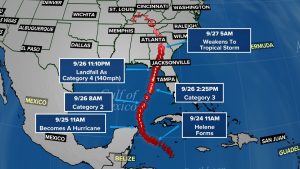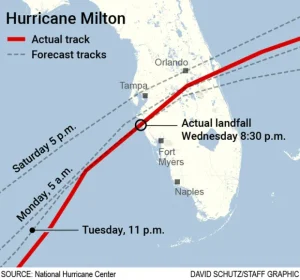
In less than two weeks, the United States has been hit back-to-back by Hurricane Helene and Hurricane Milton. Both hurricanes made landfall in Florida, with Milton coming while recovery programs for Helene were still underway. As with most hurricanes, the brunt of the damage came from the storm surge which is the change in water levels due to the storms.
Hurricane Helene:
Category/Classification: 4
Date: 11:25 pm, September 26, 2024
Number deceased: 230
Wind speeds: up to 140 mph
Area of origin: Caribbean Sea, initially developing from a disturbance between Jamaica and the Yucatan Peninsula
Storm surge: 15 feet

Hurricane Helene made landfall in Florida and quickly spread across the states, causing flooding, toppling infrastructure and power lines, and in some cases, even sweeping entire houses away altogether.
After it ravaged Florida, it then moved to Georgia as a Category 2 storm, again causing rampant flooding as the soil was already at its water capacity due to unrelated rains. In Atlanta, the highest 48-hour rain totals on record were noted. Augusta also suffered excessive rainfall, with CNN noting that there was 12-15 inches of rain, “about four months’ worth of rain in just two days.”

By the time it reached the Carolinaes, it was only a tropical storm but that did not lessen the impact of its devastation any less, as massive road closures prevented deliveries of much-needed supplies and even blocked the rescuers from entering. Charlotte City Council member Tariq Bokhari, who bore witness to the wrath of the storm, likened it to a “blender that was just taking out anything in its path.”
Helene arrived in Tennessee via the Interstate 40, a major highway connecting North Carolina and Tennessee, wiping out a significant portion of it during the journey to the next state in its path. It also took out another major roadway in Afton, the Kinser Bridge on Highway 107, and was positioned to provide a threat to the nearby Nolichucky Dam as well.
Helene’s warpath spanning over 500 miles ended in Virginia where it caused the outage of hundreds of thousands of residents’ electricity before dissipating, though its effects will live on. Helene’s combined damage was estimated to cost anywhere from $95 billion to $110 billion, according to AccuWeather’s preliminary estimate of the total damage and economic loss from Helene in the U.S.

Hurricane Milton:
Category/Classification: 3
Date: 8:30 p.m. on October 9, 2024
Number deceased: 24
Wind speeds: 120 mph
Area of origin: Pacific Ocean, then intensified the Gulf of Mexico
Storm surge: 5-10 feet
Hurricane Milton was a relatively localized hurricane that specifically set its sights on Florida, sweeping through the state still struggling to recover from Helene, and then went back to the Atlantic Ocean after wreaking its havoc. However, before and after the storm’s debut, the winds from it spurred “supercharged tornadoes,” which extended the reach of Milton’s damage.
According to CNN, “Statewide, there have been more than 30 tornadoes reported since Wednesday with more than 125 warnings issued by the National Weather Services offices in Tampa Bay, Melbourne and Miami.” They also added that this marks the most tornado warnings issued in a single day in Florida’s history, with the previous record being set at 69 warnings during Hurricane Irma in 2017.
Efforts are still underway to repair the damage caused by these back-to-back hits and to recoup the losses.
Becton’s Rho Kappa (History Honor Society) is holding a Jean Day fundraiser for hurricane relief efforts. For any additional donations please click HERE.
Sources:
https://abcnews.go.com
https://www.ncdoi.gov
https://www.nbcnews.com
https://www.cbsnews.com
https://www.whitehouse.gov
https://www.fmcsa.dot.gov
https://www.wlrn.org




















